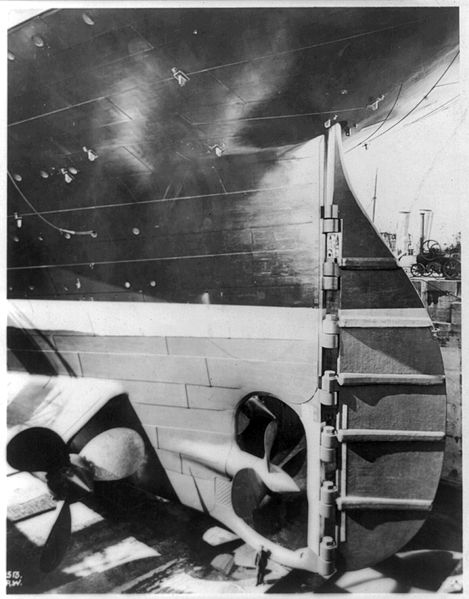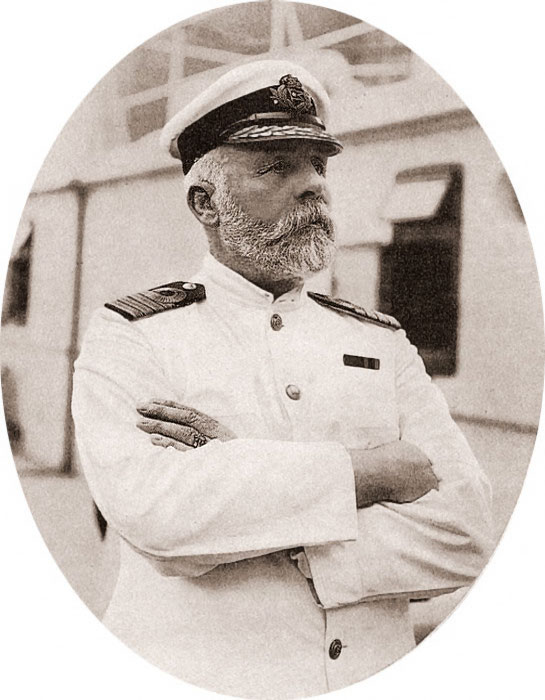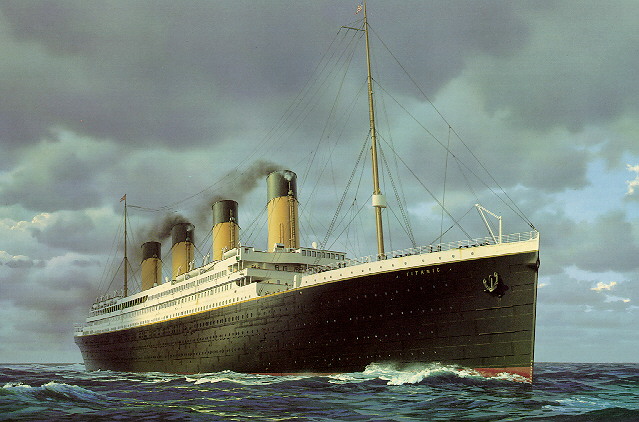At 11:40 p.m. on Sunday April 14, 1912 the Titanic on its maiden voyage struck an iceberg 375 miles south of Newfoundland. The iceberg tore a number of holes in it’s hull and 5 of the ship’s 16 watertight compartments filled with water. Within 3 hours the ship would sink and come to rest on the bottom of the Atlantic ocean at a depth of 3,784 metres. This year is the 100th anniversary of the sinking of the Titanic which resulted in the death of 1,514 of it’s 2.224 passengers. It’s one of the most famous ships in history because it’s memory has been kept alive by movies, books and exhibits. Many artefacts have been recovered from the wreck and are on display in museums around the world.
When the ship was built in Belfast, Ireland it was considered to be unsinkable. The Titanic was 269 metres long and 28 metres wide. The rudder was nearly 24 metres high and it was so huge it required it’s own engine to move it. Notice in the picture of the Titanic the man standing at the bottom of the image.

 The captain of the Titanic was Edward John Smith who was the most senior of the White Star liner’s captains. Many historians claim that he was seen on the bridge of the ship at 2:13 a.m. which was 7 minutes before the final sinking of the ship. It is believed that he went down with the ship.
The captain of the Titanic was Edward John Smith who was the most senior of the White Star liner’s captains. Many historians claim that he was seen on the bridge of the ship at 2:13 a.m. which was 7 minutes before the final sinking of the ship. It is believed that he went down with the ship.
The wreck of Titanic has been visited numerous times by explorers, scientists, filmmakers, tourists and salvagers, who have recovered thousands of items from the debris field for public display. The ship’s condition has deteriorated significantly in recent years, partly due to accidental damage caused by submersibles but mainly because of an accelerating rate of growth of iron-eating bacteria on the hull. It has been estimated that within the next 50 years the hull and structure of Titanic will collapse entirely. There is an excellent website that shows it’s journey to the bottom of the ocean floor. There is even a video shot by a submersible that shows inside Captain Edward John Smith’s cabin and you can still see his porcelain bathtub. The article appears on the BBC website and is called Titanic: Journey to the bottom of the ocean. I would encourage students to take the time to read this article and watch some of the interesting videos.

